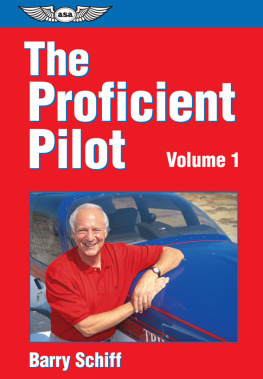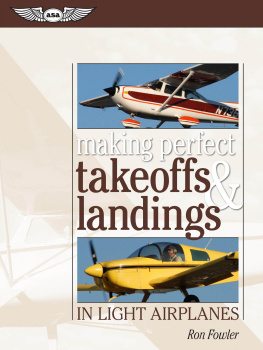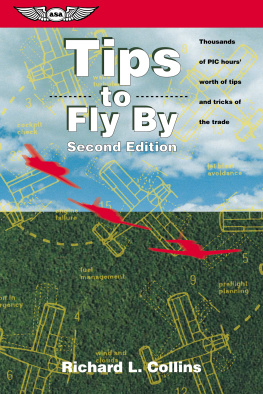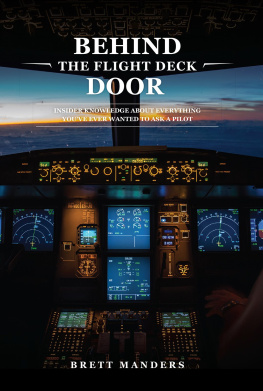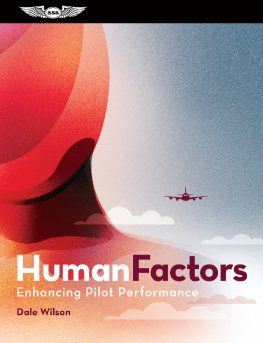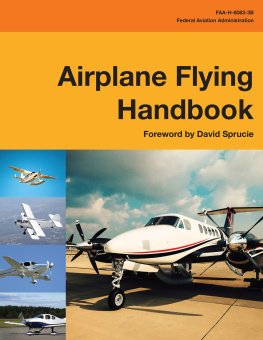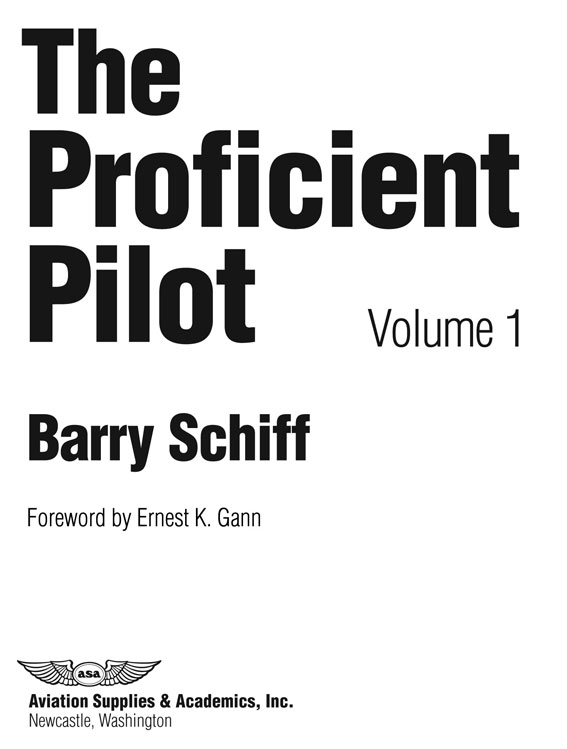
The Proficient Pilot, Volume 1
by Barry Schiff
Aviation Supplies & Academics, Inc.
7005 132nd Place SE
Newcastle, Washington 98059-3153
Email: asa@asa2fly.com
Website: www.asa2fly.com
19942003 by Barry Schiff
All rights reserved. This book, or any portions thereof, may not be reproduced in any form without written permission of the publisher.
Published 1997 by Aviation Supplies & Academics, Inc.; reprinted 2003. Ebook edition published 2012.First published 1980, Aircraft Owners and Pilots Association 1985 MacMillan. 1994 Thomasson-Grant, Inc.
ASA-PP1-EB
ePub ISBN 978-1-61954-000-2
Kindle ISBN 978-1-61954-001-9
LC# 94-14249
Also by Barry Schiff
Flight 902 is Down!*
The Vatican Target*
Golden Science Guide to Flying
The Boeing 707
All About Flying
Basic Meteorology
The Pilots Digest
The Proficient Pilot, Volume 2
Flying Wisdom: The Proficient Pilot, Volume 3
Test Pilot: 1,001 Things You Thought You Knew About Aviation
*in collaboration
Dedication
This book is dedicated to my first dozen instructors for whose patience and understanding I am eternally grateful.
Mike Walters
Steve Occhipinti
Bill Tolman
R. Pete Peterson
Richard Kersey
Frank Rosenstein
Joe DeBona
Charles Gress
Jimmy Most
Ila Pimlott
Paul Bell
Paul Blackman
Contents
Foreword
There are all kinds of pilots aloft these days, and they are as individual as they are individuals. Alas, not when it comes to flying. For all of us have entered upon an upper world that is not obliging even when sparsely inhabited. There are regulations that even the bureaucrats themselves cannot interpret with any consistency. It is best to surrender and just suppose that all of the regulations are cut for our own good.
As a consequence, the old seat-of-the-pants aviator has become almost as extinct as the aukalmost!
The trouble begins with flight instruction, which is too often the case of the blind leading the blind. If you descend to W feet at X knots and turn right at Y and descend at Z feet per minute for two minutes and thirty seconds Hallelujah! You have now completed the primary requirement of the future aviator. You must make just as many successful landings as takeoffs.
Thus do you learn to drive an airplane rather than fly it. You buy a new windbreaker and timing watch. Male or female, you swagger just a bit. But you are not an aviator. You have just become someone interested in aviation and reasonably capable of safe flight, provided all goes dandy. (Air person, Amelia, whom I knew well, would have been amused.) If you intend to become a true airman and stay that way, you have to know a lot more than following the numbers, and the best host I know of to that altocumulus of flying know-how is Barry Schiff. He not only understands the theories, but he knows how to make them work, which makes him a rare bird indeed.
Now, in my fiftieth year of flying everything from the Goodyear blimp to the U-2, the F-15, F-106, 747, and even pre-World War I types while accumulating some 20,000 hours plus, I recommend you heed Schiffs messages because they are written by a true aviator. He knows, he has done it, and is doing it. And best of all, he thinks. While that has not always been absolutely necessary in a true aviator or aviatrix, it should be part of everyones survival kit.
There is a well-established nest of curiously obtuse thinkers who insist beyond all comprehensible logic that single-engine airplanes are safer than the multi-engine variety. Welcome to the Land of Oz! Statistics prove that the average pilot is not skilled enough to continue flight if one engine quits, which compounds the nonsense. There are no statistics to cover the number of lives saved by having 50 percent of your power remaining (at night, or on instruments, or any old time), rather than 0 percent. The anti-multi-engine people say, If your one engine quits, your choice is made for you. Land immediately. I, for one, prefer to postpone a hasty decision. Im sure Barry Schiff agrees with me, even though he also flies single-engine when hes not at the helm of a 747.
Schiff is a true pro, and he covers the whole lofty field of airmanship with the skill and dignity it deserves. Beginner or veteran, you cannot avoid improving your overall comprehension of the flying business if you share some hours with such an aviator. The X approach to landing becomes a skilled numerical exercise if on instruments, as it should be. Yet because of the understanding you should receive from this book, you will also know the pure joy of the old non-mumbling approach. Your eyes will transfer to your brain a few hundred minor factors at full computer speed. Youll evaluate the apparent surface wind from countless sources, the influence of other aircraft on your decisions, the temperature effect, the glare effect, the airspeed effect plus spending of altitude, the effect of load aboard, the surrounding terrain, and the condition of the runway or grass strip; all of these matters will be brought to your attention in seconds while you slide gracefully down that invisible banister and touch down exactly where you intended. And that is flying.
There is one vital truth involved in any kind of flying, and the process separates the airmen from the drivers. Schiffs very superior book squeezes the essence of that truth drop by drop into your busy brain without your actually realizing it.
Think ahead of your airplane is one of the oldest adages in aviation. It is also the most forgotten by the drivers. If your aircraft cruises at 100 miles per hour, then think about your situation at least 5 miles ahead. If it is cruising at 350, then stretch that advance thinking to 20 or 30 miles. While the figures are as variable as the perceived situation, maybe, when you have arrived there, you are still flying the airplane. It is not flying you. We mourn for the countless nice guys and gals who forgot this venerable ceremony.
Barry Schiffs book does these honors in such a way that even I can understand his messages, which all add up to thinking ahead of your airplane. So to a great reading and thinking experience, and fair winds from the ancient pelican
Ernest K. Gann
Friday Harbor, Washington
Ernest K. Gann is the author of many books, among them The High and the Mighty, Twilight for the God, The Aviator, The Magistrate, and Fate is the Hunter.
Chapter 1 The Miracle of Lift
This antiquated piece of philosophy is, of course, fallacious. Otherwise, so the rebuttal goes, if God had intended for man to drive upon the earth, man would have been provided with little wheels on his feet.
When man observed that birds had wings, he was jealous. But as centuries passed, jealousy evolved into curiosity and eventually into challenge.
It was natural for man to emulate the birds, and he contrived all manner of flapping-wing devices in a valiant effort to mimic his feathered friends. These contrivances were called ornithopters. None were successful.
Ornithopter proponents argued vehemently that Nature must know best and that experiments with flapping wings should continue. But these arguments were illogical; otherwise, the great sailing vessels would have spanned the seven seas by wiggling their rudders like fish, and stagecoaches would have had legs instead of wheels.
Natures suggested method of flight was eventually and fortunately discarded in favor of the nonflappable wing.
Next page
